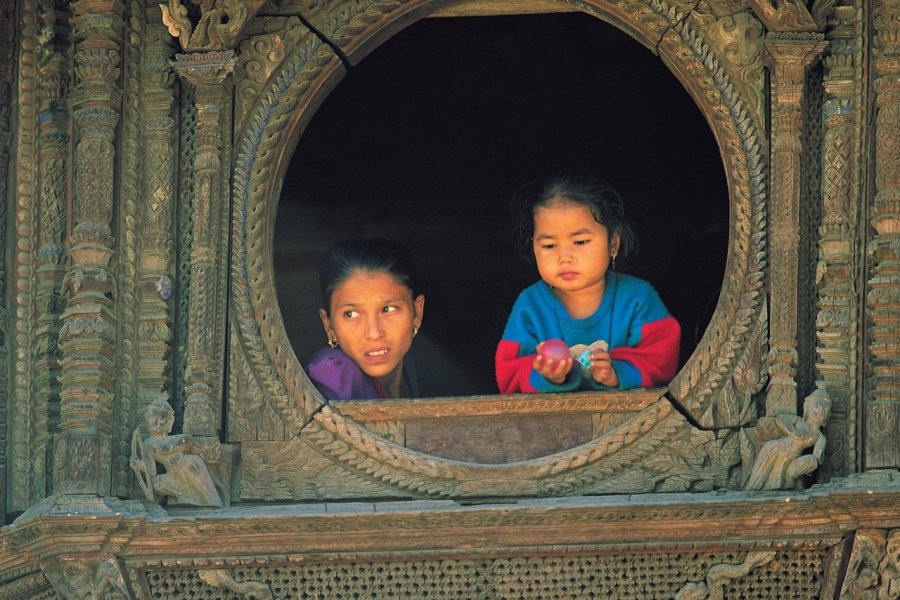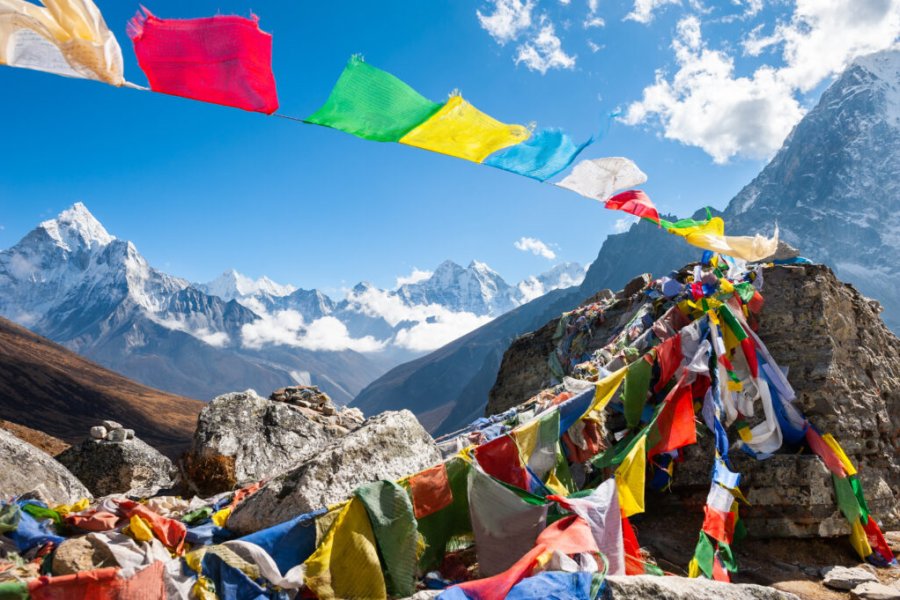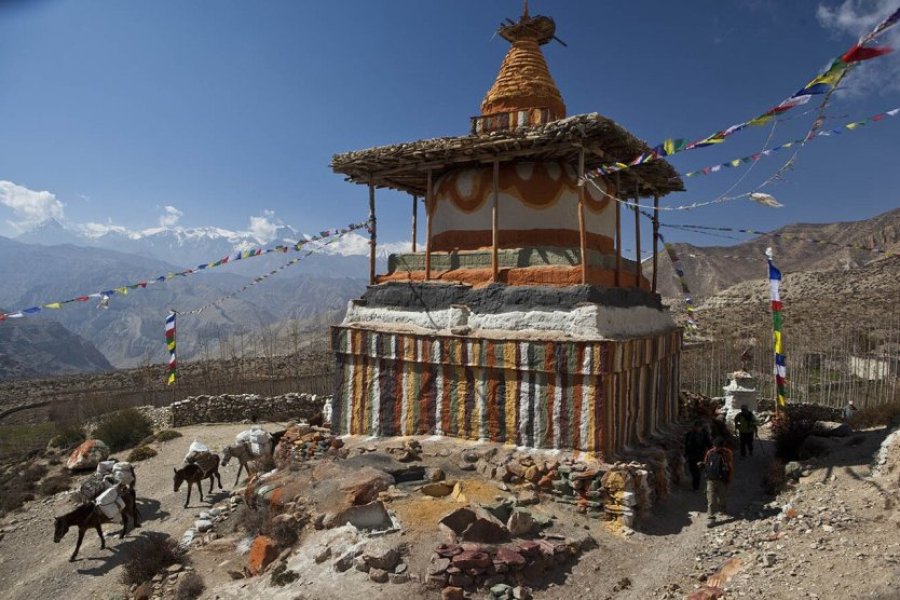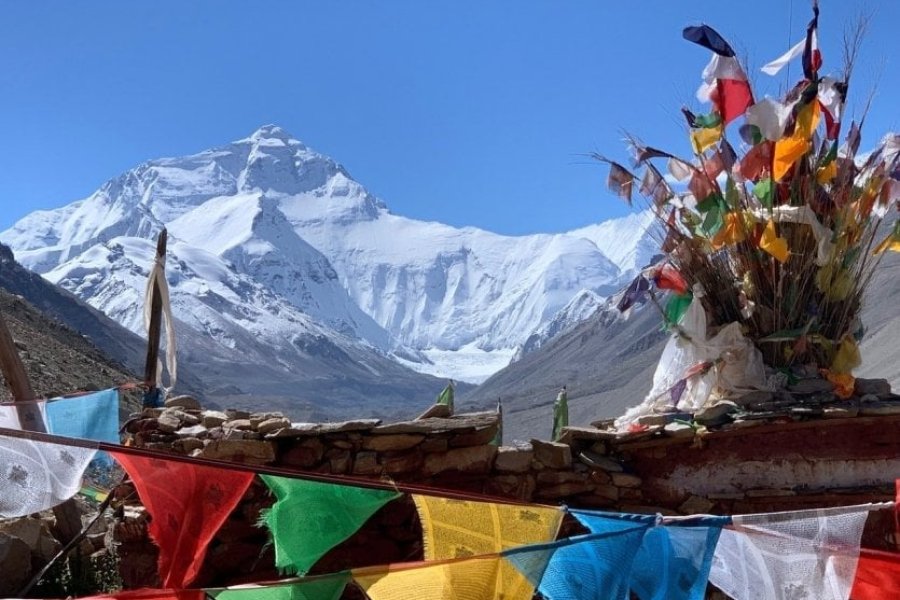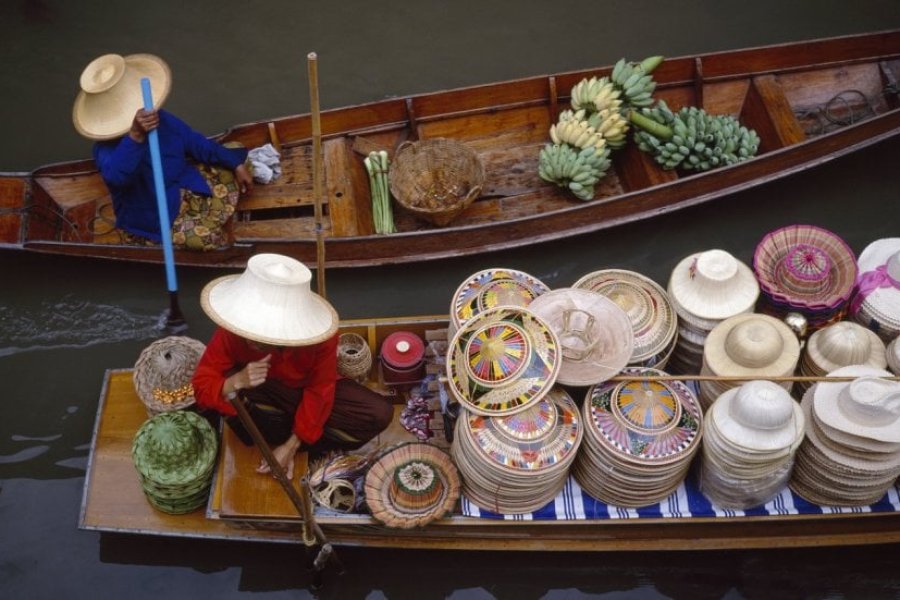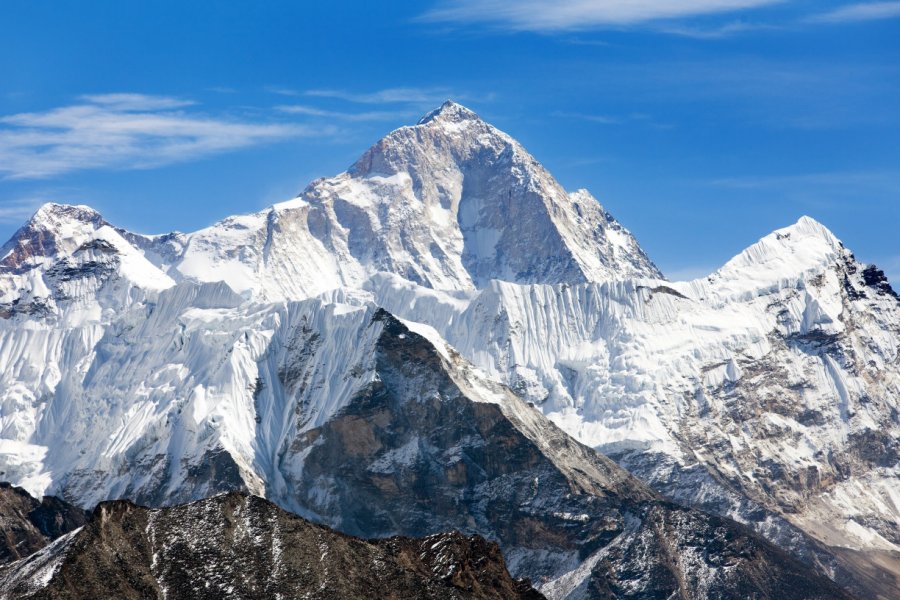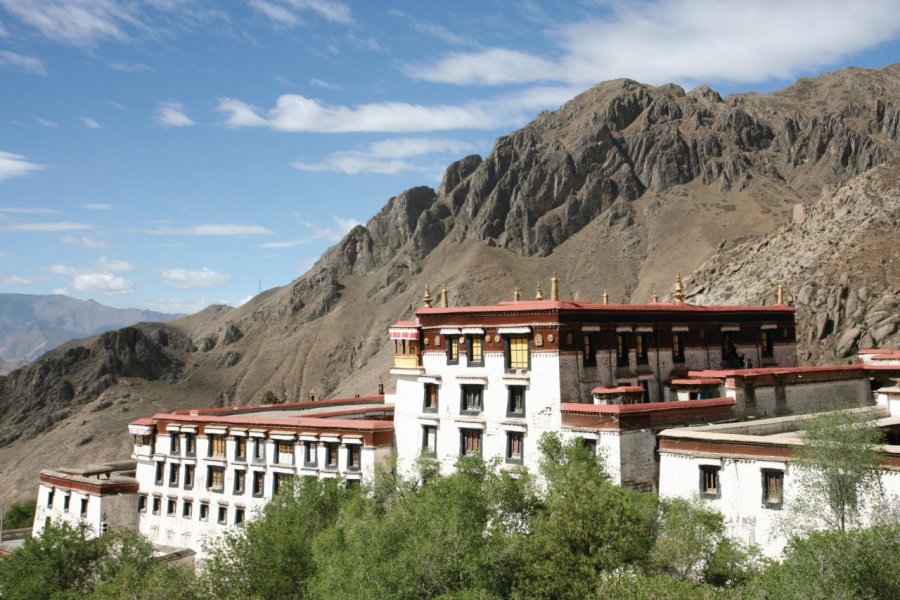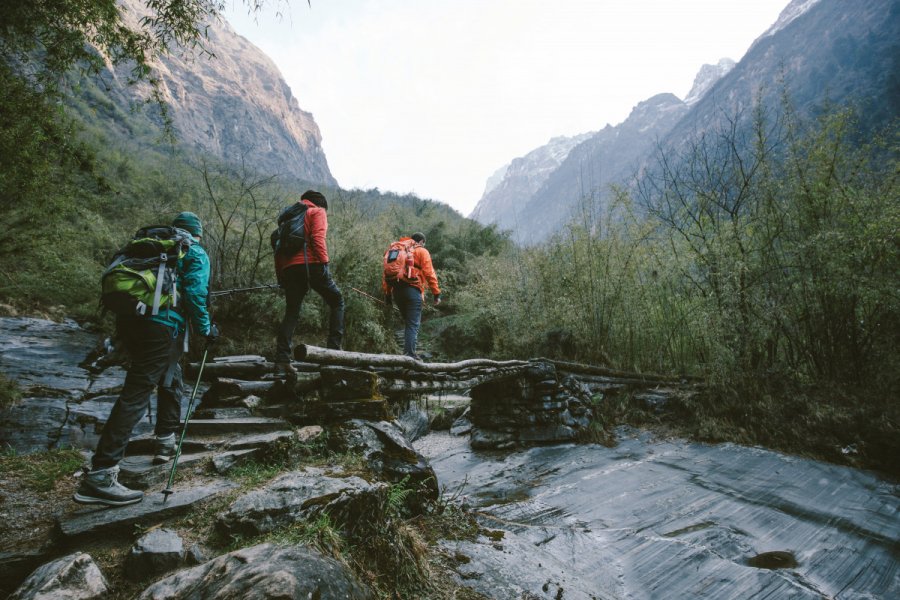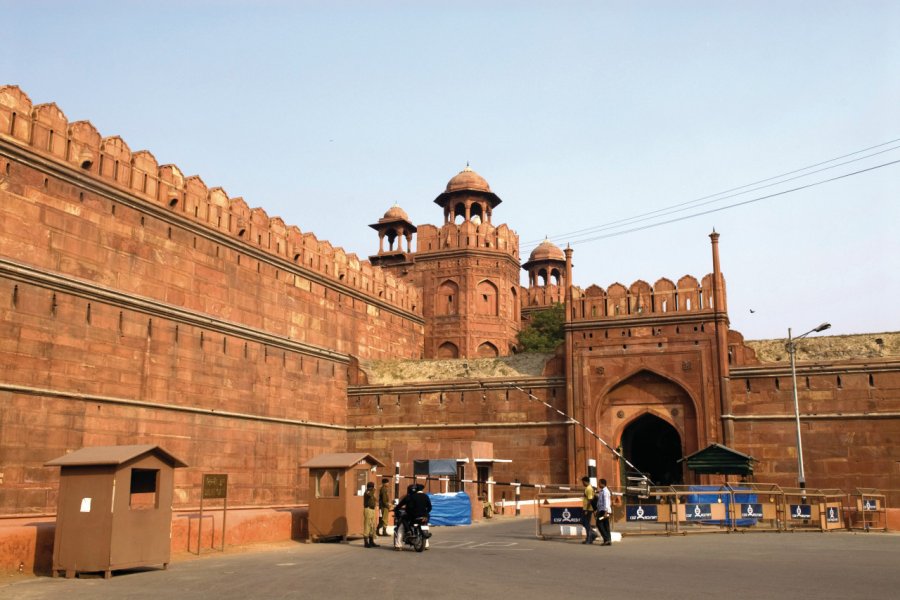Travel guide Nepal
Land of theHimalayas, Nepal is known to be the paradise of the hikers who dream of high mountain and to make the tour of Annapurna, or to admire theEverest massif. By following the indications of a tourist guide of Nepal, you will be able to discover sublime landscapes through trekking circuits, but also of canyoning or rafting. A trip to Nepal is also to discover the Buddhist culture and in particular the site of Swayambhunath and its famous stupa in the valley of Kathmandu, one of the oldest Buddhist temples of the country. Going to Nepal is also to meet seventy peoples who live in the Himalayan mountains and warmly welcome visitors. Whether it is the Newar, Sherpa, Parbatya, Gurung, Tamang, Limbu, Magar peoples, they will offer you their hospitality and their smiles, will plunge you into the beauty of their landscapes and will reveal you their ancestral mysticism. Nepal is indeed lived at the rhythm of the contacts with its population and it is also what makes this country so endearing.
What to see, what to do Nepal?
-
Book an activity
-
Customized travel
- The most beautiful cities Nepal
When to go Nepal ?
The high season in Nepal is from October to April when the weather is dry and sunny. During the high season, the best time to go to Nepal is October and November (autumn) and March and April (spring). The low season stretches from the end of April to the beginning of September in Nepal: it is the time of the monsoon. If this weather is not a particular brake to the activities, for all that your sight on the mountains is likely to be reduced because of the accumulation of clouds.
Suggested addresses Nepal
Travel Nepal
-
Find a hotel
-
Car Rental
-
-5% on travel insurance-15% off travel insurance
-
Find a local agency
Find unique Stay Offers with our Partners
How to go Nepal
How to go alone
To access Nepal, the only international airport in the country is Tribhuvan, in Kathmandu. There are no particular risks for solo travelers apart from the common sense safety precautions. In case of trek, it is however highly recommended to be accompanied by a Nepalese guide specialized in this kind of trips.
How to go on a tour
There are many tour operators offering tours in Nepal. To choose the right tour operator, it is recommended to read carefully the stages of the various proposed tours. Many of them tend indeed to privilege the great spaces, the treks and the Annapurna sanctuary but if you are rather fond of cultural visits and meetings with the population, there are adapted tours. For a mix of nature and culture, it is often simpler to opt for a customized trip.
How to get around
Due to the rugged terrain and weather conditions, getting around by road in Nepal is not always easy and often uncomfortable. However, tourist buses offer a decent comfort. The air service in the interior of the country is good and really saves time compared to the land routes...
Featured articles Nepal
Discover Nepal
Nepal is one of those destinations that never ceases to inspire travelers, adventurers, nature lovers and those with a passion for eternal summits. But do we really know this timeless country? To help you get to the heart of the matter, this chapter provides an overview of the fascinating history that has shaped Nepal, its incredible cultural melting pot, its unique geography, its gastronomy, its Newar imperial city architecture, its sumptuous Buddhist and Hindu temples, its authentic handicrafts... and, of course, its many natural assets. And, of course, its many natural attractions: welcome to the land of trekking, mountaineering and safaris, where you can meet tigers and rhinos. A country where the people are always welcoming. We take a closer look at this magnificent, little-known destination, with its legendary hospitality and breathtaking landscapes.
Pictures and images Nepal
The 12 keywords Nepal
1. #National Happiness
Created in 1972, the concept of "Gross National Happiness" has made Bhutan famous. Its objective? To replace the Gross National Product and propose a new indicator of wealth based on 4 pillars: environmental protection, promotion of Bhutanese culture, good governance and responsible economic development.
2. #Buddhism

Buddhism, which is omnipresent in Bhutan, was introduced there in the 8th century. The kingdom is the only country in the world to have recognized Tantric Buddhism (or Mahāyāna) as the state religion. It is therefore deeply rooted in the traditions of the kingdom. Three-quarters of Bhutanese claim to be Buddhist and draw inspiration from it on a daily basis.
3. #Costume
In Bhutan, the wearing of national costume is compulsory in public, at school and during official performances. Women wear an elegant, long traditional dress, the kira, with a short jacket, while men wear the go, a kind of kimono pulled up to the knees in a skirt and tightened at the waist with a belt.
4. #Dal Bhat
This is Nepal's national dish. You can't go wrong with this lentil soup, served with white rice and a vegetable curry. The Nepalese love it and eat it morning, noon and night! It's served with spinach, a spicy mix (sensitive souls please refrain!), yoghurt(dahi) and a spicy wafer(papad), of course!
5. #Dzong

Often built on the mountainside, these imposing fortresses, typically Bhutanese, are strategically located in strategic points of the country. They serve both as regional administrative centres and as seats of religious power for each of the provinces. A particular sign: the dzongs were all built without an architect's plan!
6. #Himalaya

A natural border between the Indian continent and the Tibetan plateau, the Himalayas mean "home of the snows" in Sanskrit. Crossing five countries (Pakistan, Nepal, India, China and Bhutan), the mythical mountain range is home to the highest peaks in the world. Of the fourteen peaks, eight are located in Nepal, all over 8,000 metres above sea level.
7. #Namaste
You can hear it everywhere! And with good reason: "Namaste" means "hello", "goodbye", or "nice to meet you". In reality, the expression means "I salute the divine in you". In Nepal, it is most often pronounced as a greeting by raising your two hands together in front of you and bowing slightly.
8. #Newar
They are the first inhabitants of the Kathmandu valley. Ethnicity represents less than 10% of the population and speaks a language that has nothing to do with Nepali. Talented artists, the Newar excel in stone carving and woodworking. The prowess of Newar architecture is most visible in the Kathmandu Valley.
9. #Sâdhu
These "holy men" (and a few women) have renounced the world in an attempt to achieve liberation, the ultimate stage of life in the Hindu religion. Supposed to devote themselves exclusively to meditation, they live off public charity. In places frequented by tourists, sadhus are more often beggars than true ascetics.
10. #Earthquake
On April 25 and May 12, 2015, two earthquakes of magnitude 7.8 and 7.3 hit Nepal. The Kathmandu valley was the hardest hit. The toll was heavy: almost 9,000 dead, tens of thousands injured and homeless, and historic temples destroyed. A tragedy that is still very much alive today.
11. #Takin
This is Bhutan's emblematic animal. This mammal lives in herds in the Himalayan steppes. According to legend, it was a lama master who, after eating an entire cow and goat, assembled the bone remains to create a takin. Hence its strange appearance: a goat's head, a cow's body and lyre-shaped horns.
12. #Tschechu

This is one of the highlights of Bhutanese life: attending a Tschechu, one of those festivals with ritual dances (cham) performed by dancers wearing masks and spectacular costumes. A unique experience! The tschechu season starts in autumn and the dates differ from region to region.
You are from here, if...
You cross without looking, throwing yourself on the road and slaloming through the cars and motorbikes, to the sound of the horns in chorus.
You can't help but turn the smallest prayer wheel, always clockwise and with your right hand.
You bow as a sign of respect when you pass a cow in the street.
You chew doma all day long. Chewing this nut chew wrapped in a betel leaf would have euphoric virtues. Beware of red teeth next!
You cover your shoulders with a scarf (kabne) when you go to a monastery or dzong. The colour of the cloth (white, blue, green) determines the rank of the person.
Once a week, on Tuesday, you scrupulously respect Dry Day, the day without alcohol. In other words, cafés and bars remain open but they are strictly forbidden to serve alcohol!

